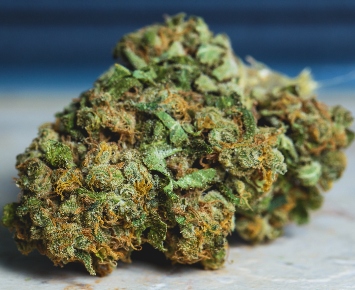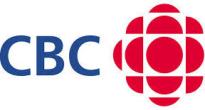Indications by the Israeli Ministry of Health:
► Oncology Field:
- Patients undergoing chemotherapy or those up to six months after treatment for nausea and pain relief related to their treatment.
- For pain relief for patients with metastatic cancers and after conventional treatment methods are exhausted.
Oncology departments who have received permission to issue a license in the hospital:
• Rambam Medical Center (Haifa)
• Ziv Medical Center (Safed)
• Assaf Harofeh Medical Center (Rishon Lezion)
• Ichilov Sourasky Medical Center (Tel Aviv)
• Medical Center, Sheba - Tel Hashomer
• Medical Centers blessed by Fede - Fourier
Research
Antineoplastic activity of cannabinoids
J Natl Cancer Inst. 1975 Sep;55(3):597-602
Munson AE, Harris LS, Friedman MA, Dewey WL, Carchman RA
Abstract
Lewis lung adenocarcinoma growth was retarded by the oral administration of delta9-tetrahydrocannabinol (delta9-THC), delta8-tetrahydrocannabinol (delta8-THC), and cannabinol (CBN), but not cannabidiol (CBD). Animals treated for 10 consecutive days with delta9-THC, beginning the day after tumor implantation, demonstrated a dose-dependent action of retarded tumor growth. Mice treated for 20 consecutive days with delta8-THC and CBN had reduced primary tumor size. CBD showed no inhibitory effect on tumor growth at 14, 21, or 28 days. Delta9-THC, delta8-THC, and CBN increased the mean survival time (36% at 100 mg/kg, 25% at 200 mg/kg, and 27% at 50 mg/kg, respectively), whereas CBD did not. Delta9-THC administered orally daily until death in doses of 50, 100, or 200 mg/kg did not increase the life-spans of (C57BL/6 times DBA/2)F1 (BDF1) mice hosting the L1210 murine leukemia. However, delta9-THC administered daily for 10 days significantly inhibited Friend leukemia virus-induced splenomegaly by 71% at 200 mg/kg as compared to 90.2% for actinomycin D. Experiments with bone marrow and isolated Lewis lung cells incubated in vitro with delta9-THC and delta8-THC showed a dose-dependent (10(-4)-10(-7)) inhibition (80-20%, respectively) of tritiated thymidine and 14C-uridine uptake into these cells. CBD was active only in high concentrations (10(-4))
The endocannabinoid system and cancer: Therapeutic Implications
Department of Psychological and Brain Sciences, Indiana University, Bloomington, IN 47405
Abstract
The endocannabinoid system is implicated in a variety of physiological and pathological conditions (inflammation, immunomodulation, analgesia, cancer and others). The main active ingredient of cannabis, Δ(9) -tetrahydrocannabinol (Δ(9) -THC), produces its effects through activation of CB(1) and CB(2) receptors. CB(1) receptors are expressed at high levels in the central nervous system (CNS), whereas CB(2) receptors are concentrated predominantly, although not exclusively, in cells of the immune system. Endocannabinoids are endogenous lipid-signalling molecules that are generated in the cell membrane from phospholipid precursors. The two best characterized endocannabinoids identified to date are anandamide (AEA) and 2-arachidonoylglycerol (2-AG). Here we review the relationship between the endocannabinoid system and anti-tumor actions (inhibition of cell proliferation and migration, induction of apoptosis, reduction of tumor growth) of the cannabinoids in different types of cancer. This review will focus on examining how activation of the endocannabinoid system impacts breast, prostate and bone cancers in both in vitro and in vivo systems. The therapeutic potential of cannabinoids for cancer, as identified in clinical trials, is also discussed. Identification of safe and effective treatments to manage and improve cancer therapy is critical to improve quality of life and reduce unnecessary suffering in cancer patients. In this regard, cannabis-like compounds offer therapeutic potential for the treatment of breast, prostate and bone cancer in patients. Further basic research on anti-cancer properties of cannabinoids as well as clinical trials of cannabinoid therapeutic efficacy in breast, prostate and bone cancer is therefore warranted
Effects of cannabinoids and cannabinoid-enriched Cannabis extracts on TRP channels and endocannabinoid metabolic enzymes
De Petrocellis L, Ligresti A, Moriello AS, Allarà M, Bisogno T, Petrosino S, Stott CG, Di Marzo V
Endocannabinoid Research Group, Institute of Cybernetics and Institute of Biomolecular Chemistry, CNR, Pozzuoli (NA), Italy; GW Pharma Ltd., UK
Abstract
Background and purpose Cannabidiol (CBD) and Δ(9) -tetrahydrocannabinol (THC) interact with transient receptor potential (TRP) channels and enzymes of the endocannabinoid system. Experimental approach. The effects of eleven pure cannabinoids and botanical extracts (BDS) from Cannabis varieties selected to contain a more abundant cannabinoid, on TRPV1, TRPV2, TRPM8, TRPA1, human recombinant diacylglycerol lipase α (DAGLα), rat brain fatty acid amide hydrolase (FAAH), COS cell monoacylglycerol lipase (MAGL), human recombinant N-acylethanolamine acid amide hydrolase (NAAA), and anandamide cellular uptake (ACU) by RBL-2H3 cells, were studied using fluorescence-based calcium assays in transfected cells and radiolabelled substrate-based enzymatic assays. Cannabinol (CBN), cannabichromene (CBC), the acids (CBDA, CBGA, THCA) and propyl homologues (CBDV, CBGV, THCV) of CBD, cannabigerol (CBG) and THC, and tetrahydrocannabivarin acid (THCVA) were also tested. Key results. CBD, CBG, CBGV and THCV stimulated and desensitized human TRPV1. CBC, CBD and CBN were potent rat TRPA1 agonists and desensitizers, but THCV-BDS was the most potent compound at this target. CBG-BDS and THCV-BDS were the most potent rat TRPM8 antagonists. All non-acid cannabinoids, except CBC and CBN, potently activated and desensitized rat TRPV2. CBDV and all the acids inhibited DAGLα. Some BDS, but not the pure compounds, inhibited MAGL. CBD was the only compound to inhibit FAAH, whereas the BDS of CBC > CBG > CBGV inhibited NAAA. CBC = CBG > CBD inhibited ACU, as did the BDS of THCVA, CBGV, CBDA and THCA, but the latter extracts were more potent inhibitors. Conclusions and implications. These results are relevant to the analgesic, anti-inflammatory and anti-cancer effects of cannabinoids and Cannabis extracts
Multicenter, Double-Blind, Randomized, Placebo-Controlled, Parallel-Group Study of the Efficacy, Safety, and Tolerability of THC:CBD Extract and THC Extract in Patients With Intractable Cancer-Related Pain
Johnson JR, Burnell-Nugent M, Lossignol D, Ganae-Motan ED, Potts R, Fallon MT.
J Pain Symptom Manage. 2010 Feb;39(2):167-79
A cannabis extract containing THC and CBD was superior in reducing pain than placebo.
This study compared the efficacy of a tetrahydrocannabinol:cannabidiol (THC:CBD) extract, a nonopioid analgesic endocannabinoid system modulator, and a THC extract, with placebo, in relieving pain in patients with advanced cancer. In total, 177 patients with cancer pain, who experienced inadequate analgesia despite chronic opioid dosing, entered a two-week, multicenter, double-blind, randomized, placebo-controlled, parallel-group trial. Patients were randomized to THC:CBD extract (n = 60), THC extract (n = 58), or placebo (n = 59). The primary analysis of change from baseline in mean pain Numerical Rating Scale (NRS) score was statistically significantly in favor of THC:CBD compared with placebo (improvement of -1.37 vs. -0.69), whereas the THC group showed a nonsignificant change (-1.01 vs. -0.69). Twice as many patients taking THC:CBD showed a reduction of more than 30% from baseline pain NRS score when compared with placebo (23 [43%] vs. 12 [21%]). The associated odds ratio was statistically significant, whereas the number of THC group responders was similar to placebo (12 [23%] vs. 12 [21%]) and did not reach statistical significance. There was no change from baseline in median dose of opioid background medication or mean number of doses of breakthrough medication across treatment groups. No significant group differences were found in the NRS sleep quality or nausea scores or the pain control assessment. However, the results from the European Organisation for Research and Treatment of Cancer Quality of Life Cancer Questionnaire showed a worsening in nausea and vomiting with THC:CBD compared with placebo (P = 0.02), whereas THC had no difference (P = 1.0). Most drug-related adverse events were mild/moderate in severity. This study shows that THC:CBD extract is efficacious for relief of pain in patients with advanced cancer pain not fully relieved by strong opioids.










































